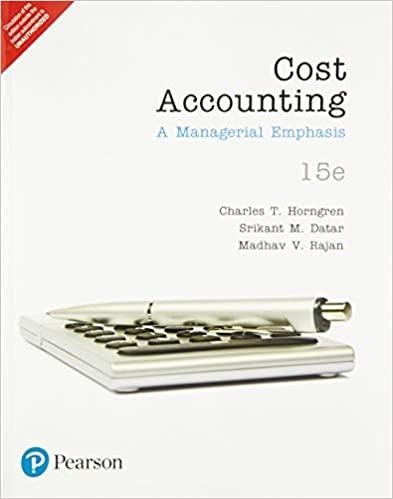Question
Strods Company's current year income statement, comparative balance sheets, and additional information follow. For the year, (1) all sales are credit sales, (2) all credits
Strods Company's current year income statement, comparative balance sheets, and additional information follow. For the year, (1) all sales are credit sales, (2) all credits to Accounts Receivable reflect cash receipts from customers, (3) all purchases of inventory are on credit, (4) all debits to Accounts Payable reflect cash payments for inventory, and (5) Other Expenses are paid in advance and are initially debited to Prepaid Expenses.
STRODS COMPANY
Comparative Balance Sheets
December 31
Current Year Prior Year
Assets
Cash $ 61,400 $ 71,600
Accounts receivable 79,000 61,000
Inventory 281,000 257,000
Prepaid expenses 2,700 3,400
Total current assets 424,100 393,000
Equipment 223,000 153,000
Accum. depreciationEquipment (50,000 ) (65,000 )
Total assets $ 597,100 $ 481,000
Liabilities and Equity Accounts payable $ 56,100 $ 121,000
Short-term notes payable 18,000 11,000
Total current liabilities 74,100 132,000
Long-term notes payable 85,000 64,000
Total liabilities 159,100 196,000
Equity Common stock, $5 par value 170,000 150,000
Paid-in capital in excess of par, common stock 60,000 0
Retained earnings 208,000 135,000
Total liabilities and equity $ 597,100 $ 481,000
STRODS COMPANY
Income Statement
For Current Year
Ended December 31
Sales $ 783,000
Cost of goods sold 330,000
Gross profit 453,000
Operating expenses
Depreciation expense $ 22,000
Other expenses 177,000
199,000
Other gains (losses)
Loss on sale of equipment (6,600 )
Income before taxes 247,400
Income taxes expense 43,000
Net income $ 204,400
Additional Information on Current Year Transactions:
a. The loss on the cash sale of equipment was $6,600 (details in b).
b. Sold equipment costing $56,000, with accumulated depreciation of $37,000, for $12,400 cash.
c. Purchased equipment costing $126,000 by paying $36,000 cash and signing a long-term note payable for the balance.
d. Borrowed $7,000 cash by signing a short-term note payable.
e. Paid $69,000 cash to reduce the long-term notes payable.
f. Issued 4,000 shares of common stock for $20 cash per share.
g. Declared and paid cash dividends of $131,400.
1. Reconstruct the journal entry for cash receipts from customers, incorporating the change in the related balance sheet account(s), if any.
2. Reconstruct the journal entry for cash payments for inventory, incorporating the change in the related balance sheet account(s), if any. Notes were not issued for the purchase of inventory.
3. Reconstruct the journal entry for depreciation expense, incorporating the change in the related balance sheet account(s), if any.
4. Reconstruct the journal entry for cash paid for operating expenses, incorporating the change in the related balance sheet account(s), if any.
5. Reconstruct the journal entry for the sale of equipment at a loss, incorporating the change in the related balance sheet account(s), if any.
6. Reconstruct the journal entry for income taxes expense, incorporating the change in the related balance sheet account(s), if any.
7. Reconstruct the entry for the purchase of new equipment.
8. Reconstruct the entry for the issuance of the short-term note payable.
9. Reconstruct the entry for the payment on the long-term note payable.
10. Reconstruct the entry for the issuance of common stock.
11. Reconstruct the entry to record the payment of cash dividends.
12. Close the revenue account(s) to income summary.
13. Close the expense and loss accounts to income summary.
14. Close Income Summary to Retained Earnings.
Step by Step Solution
There are 3 Steps involved in it
Step: 1

Get Instant Access to Expert-Tailored Solutions
See step-by-step solutions with expert insights and AI powered tools for academic success
Step: 2

Step: 3

Ace Your Homework with AI
Get the answers you need in no time with our AI-driven, step-by-step assistance
Get Started


